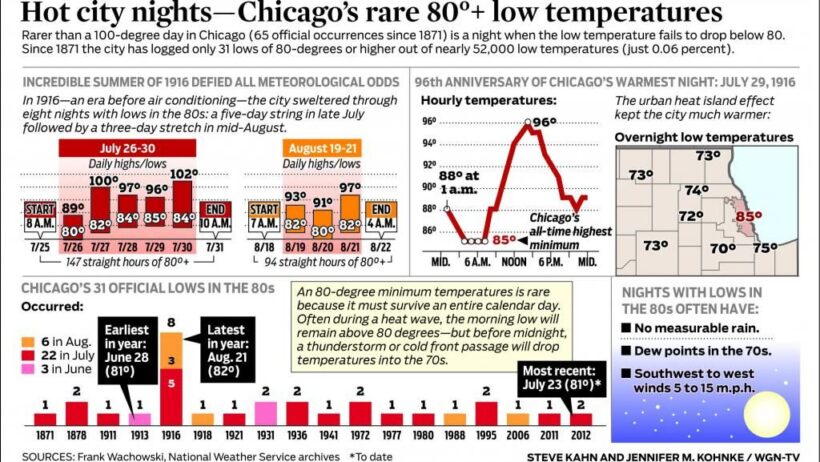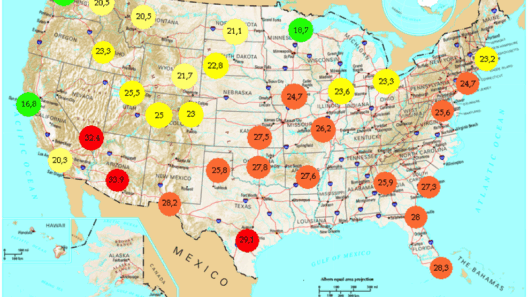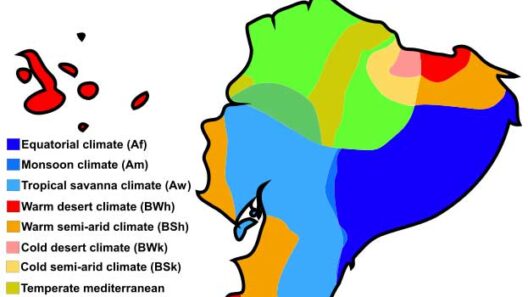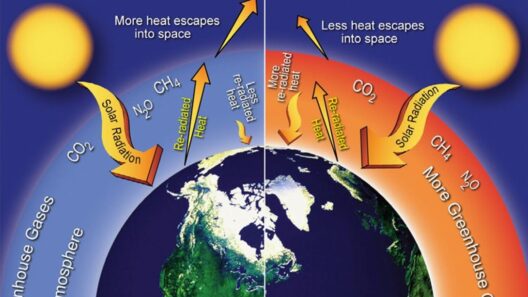New York City (NYC), a veritable concrete behemoth, is emblematic of urban climate dynamics, where the interplay between the built environment and natural weather patterns creates a distinctive meteorological profile. From the sweltering heat of summer to the frigid embrace of winter, NYC experiences a wide spectrum of climatic conditions, influenced by geographical location, urbanization, and climate change. This exploration delves into the nuances of NYC’s climate, encompassing its seasonal variations, extreme weather events, and the looming challenges posed by global warming.
In terms of general classification, New York City is situated in a humid subtropical zone, exhibiting characteristics akin to a temperate maritime climate. The average temperatures exhibit a dramatic swing throughout the year, with summer highs often cresting beyond 90°F (32°C) while winter lows plunge occasionally below 20°F (-6°C). Such variability necessitates adaptability among the city’s residents, who oscillate between sweltering heat and biting cold.
With summer comes a palpable intensity in the atmosphere, characterized by high humidity levels and expansive heat islands formed by the conglomeration of buildings and infrastructure. The thermal energy absorbed by concrete and asphalt radiates back into the atmosphere, exacerbating the heat. This phenomenon can lead to what is colloquially known as the “urban heat island effect,” where temperatures in densely populated areas significantly exceed those of surrounding locales. Notably, average monthly temperatures from June to August hover around a sweltering 80°F (27°C), with humidity making conditions feel even more oppressive.
Moreover, heat waves, defined by extended periods of excessively high temperatures, have become increasingly frequent due to climate change. These episodes pose significant health risks, particularly for vulnerable populations lacking access to adequate cooling. City initiatives, including the establishment of cooling centers and public awareness campaigns, underscore the importance of adaptive strategies in the face of escalating temperatures. However, the success of such measures is intrinsically linked to broader climate action that limits greenhouse gas emissions.
As autumn descends, the natural palette of the city transforms, with trees ablaze in hues of copper and gold. Temperatures begin to dip, offering welcome relief from the summer heat. September still bears remnants of summer warmth, but by November, the crisp air sets the stage for winter’s impending arrival. Average temperatures during autumn range between 61°F (16°C) and 40°F (4°C) as the city transitions seamlessly into the colder months.
Winter in New York City is a dual-edged sword. On one hand, it can be quite enchanting, with snow blanketing the city and transforming streets into a winter wonderland. On the other hand, it brings forth significant meteorological challenges. The average winter temperature, from December to February, hovers around 32°F (0°C). Snowfall, while often picturesque, can accumulate heavily, causing disruptions in transportation and posing hazards on roadways. Major storms that unleash several inches of snow at once, dubbed “nor’easters,” are common and can paralyze the city for days.
In addition to snowfall, winter storms have become more unpredictable, often oscillating between heavy rain and snow, depending on fluctuations in temperature. The variance underscores the impacts of climate change on traditional weather patterns, leading to concerns about the resilience of urban infrastructure. Flooding, spurred by extreme precipitation events, can render street-level transport untenable and overwhelm the city’s drainage systems.
Spring heralds the return of life, with temperatures gradually ascending and flora rejuvenating after the dormant winter. With average temperatures rising from the low 40s°F (4°C) in March to the upper 60s°F (20°C) by May, the city becomes a tapestry of blossoming parks and bustling street fairs. The transition can, however, be abruptly marked by late-season snowfalls, a reminder of the unpredictability of weather during transitional seasons.
Climate resiliency is an omnipresent concern for city planners and policymakers, who strive to mitigate the vulnerabilities posed by extreme weather and shifting seasonal patterns. Rising sea levels, increased frequency of storm surges, and intensified heat events necessitate innovative approaches to urban design and infrastructure. Green roofs, permeable pavement, and enhanced stormwater management systems are among the strategies being developed to combat these challenges.
The interplay of climate and urbanization in New York City highlights the complex interdependencies of ecosystems and human activity. As climate change continues to exert its influence, the evolution of NYC’s climate will inevitably reflect broader trends observed globally. It is incumbent upon city officials and residents alike to embrace adaptive strategies that mitigate climate-related risks while promoting sustainable growth.
To conclude, New York City is shaped not only by its iconic skyline and cultural vibrancy but also by a complex climate influenced by geographical, meteorological, and anthropogenic factors. Each season presents a unique tapestry of weather patterns and challenges for its inhabitants. As the realities of climate change manifest increasingly vividly, addressing the environmental footprint while fostering adaptation strategies will be paramount in preserving the essence and livability of this iconic urban landscape.







